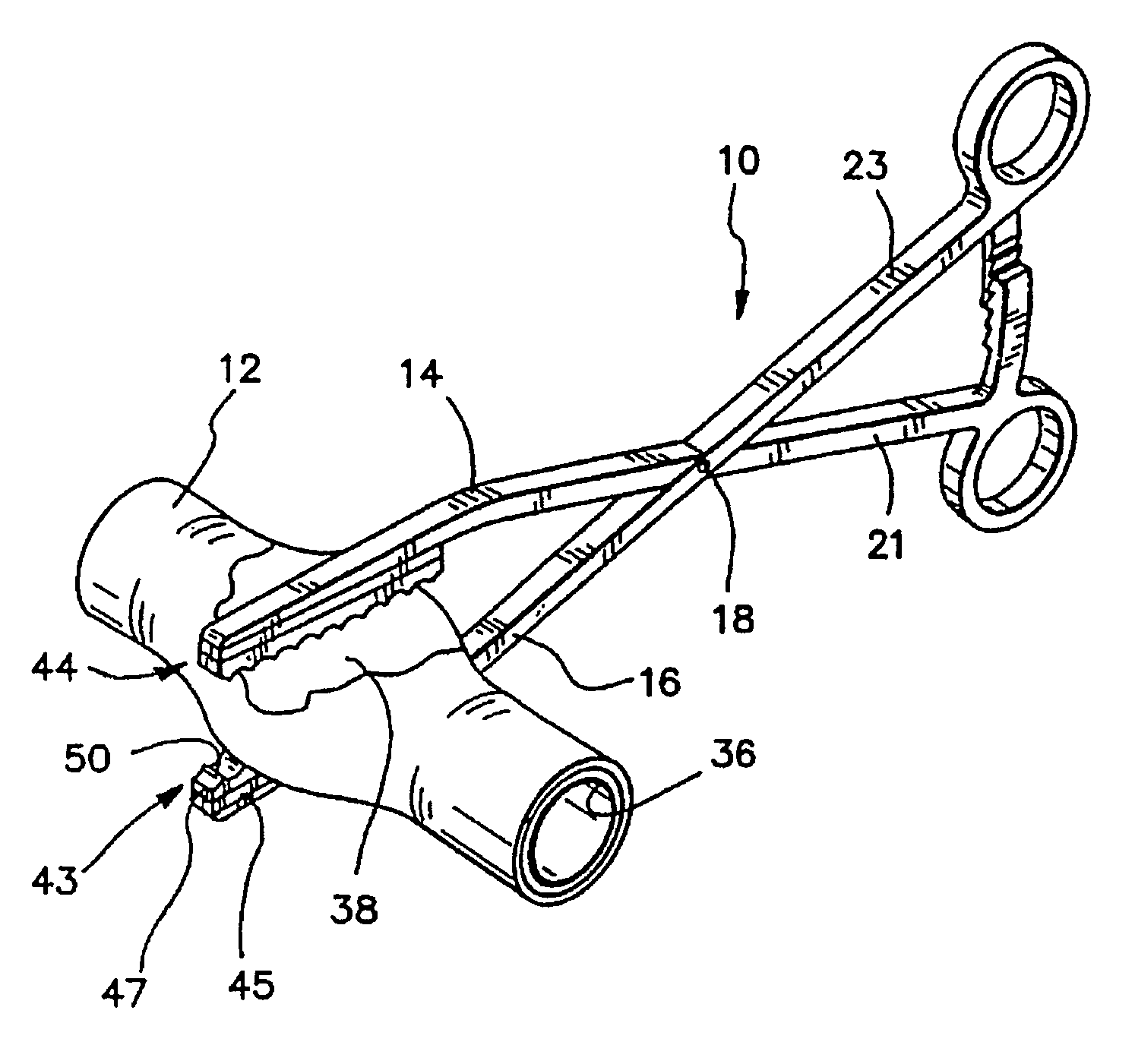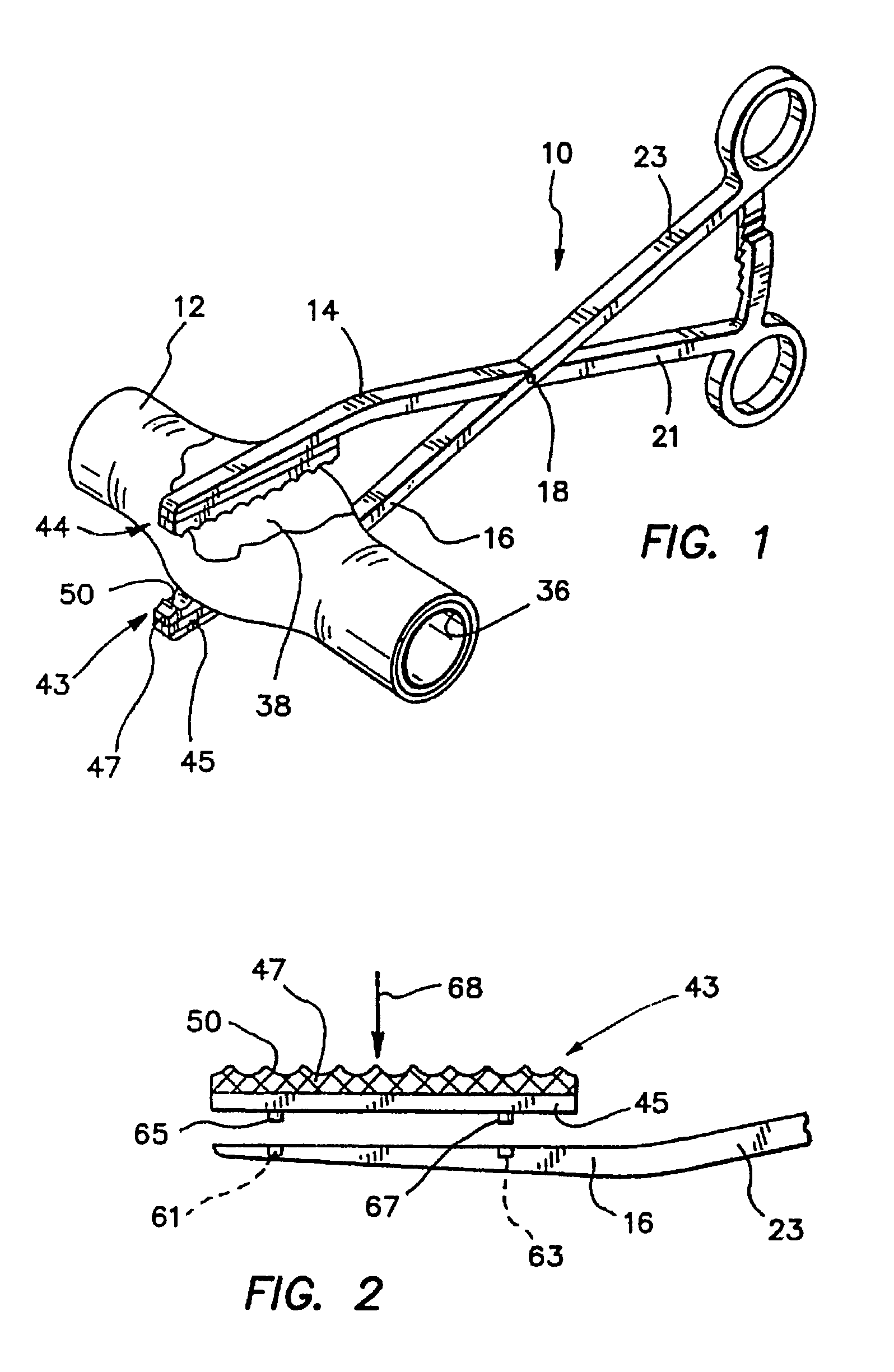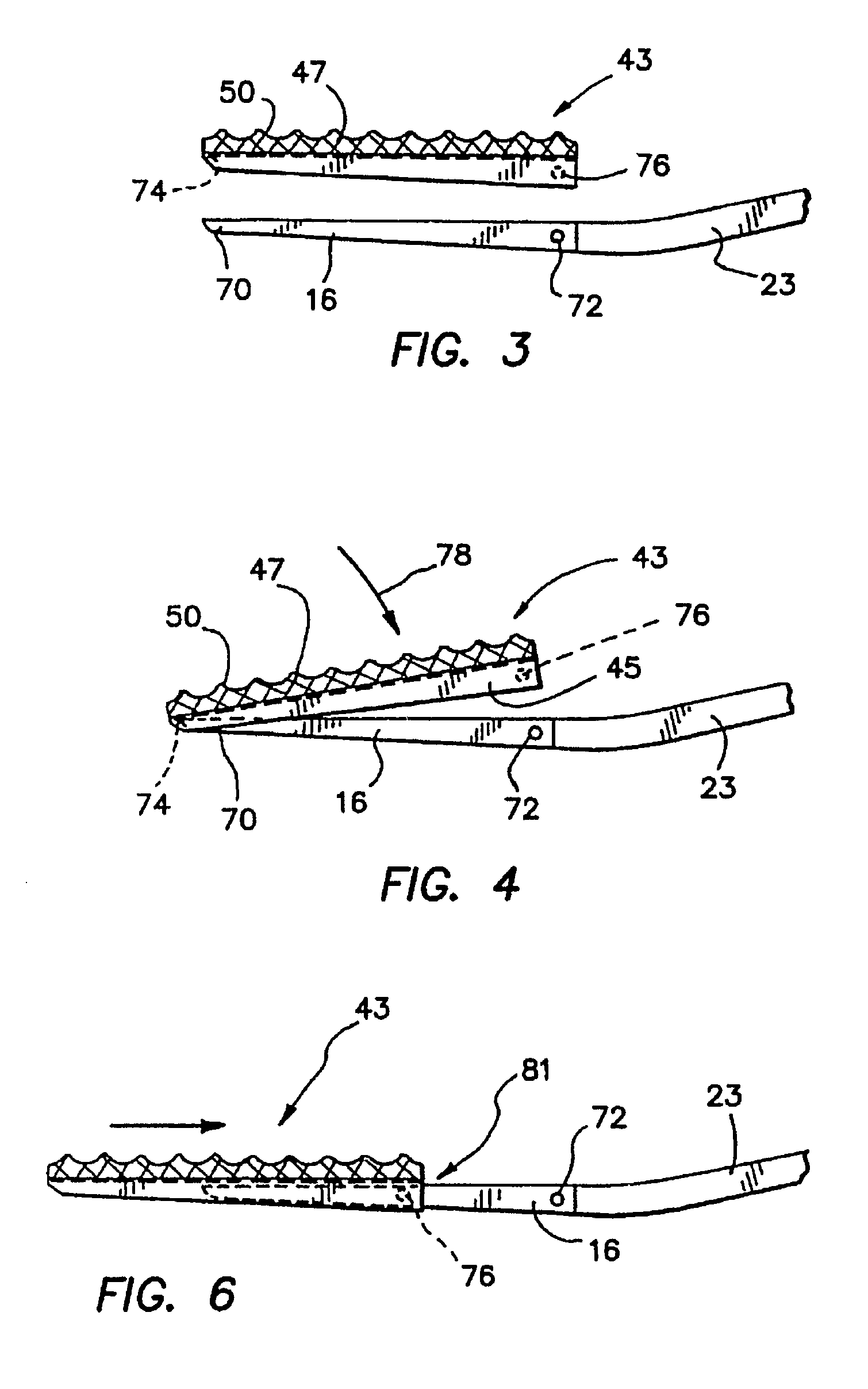Peripheral vascular occlusion devices
a technology of vascular occlusion and conduit, which is applied in the field of surgical conduit occlusion devices, can solve the problems of increasing the clamping force to achieve the second objective, reducing the safety of patients, and destroying the precious intimal lining which cannot be regenerated, so as to achieve the effect of reducing the trauma of surgery and facilitating installation and removal
- Summary
- Abstract
- Description
- Claims
- Application Information
AI Technical Summary
Benefits of technology
Problems solved by technology
Method used
Image
Examples
Embodiment Construction
[0024] Clamps are commonly used to restrict the flow of fluids and semi-solids in body conduits. By way of example, a clamp 10 is illustrated in FIG. 1 and designated generally by the reference numeral 10. This clamp is illustrated in an operative state occluding a body conduit such as a portion of an intestine 12. The clamp 10 has a pair of opposing jaws 14 and 16 which are pivotal relative to each other at a fulcrum 18 by operation of associated scissor-type handles 21 and 23, respectively. Since the intestine 12 is a relatively large conduit, the clamp 10 will typically have jaws 14, 16 with a length of about two to three inches.
[0025] The jaws 14, 16 in the open state are widely separated to facilitate insertion of the associated conduit 12 between the jaws. In the closed state, the jaws 14, 16 are closely spaced to engage the exterior of the conduit 12, and to pinch opposing walls of the conduit 12 against themselves so as to create a restriction in the flow of fluids through ...
PUM
 Login to View More
Login to View More Abstract
Description
Claims
Application Information
 Login to View More
Login to View More - R&D
- Intellectual Property
- Life Sciences
- Materials
- Tech Scout
- Unparalleled Data Quality
- Higher Quality Content
- 60% Fewer Hallucinations
Browse by: Latest US Patents, China's latest patents, Technical Efficacy Thesaurus, Application Domain, Technology Topic, Popular Technical Reports.
© 2025 PatSnap. All rights reserved.Legal|Privacy policy|Modern Slavery Act Transparency Statement|Sitemap|About US| Contact US: help@patsnap.com



